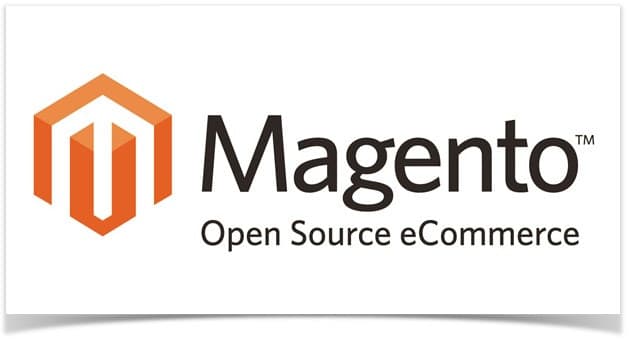How To Build Scalable And Fast Online Shops
Looking to build a quick and scalable ecommerce application that would provide seamless experience to your customers? The ultimate aim of every such site is to provide exemplary experience to customers, because happy customers would refer the business to their family and friends, and thus, your little group of customers would grow, until you have a huge fan following. All that is good, but it is also important to develop an online store that can handle traffic spikes and seasonal surges. You need to have a proper strategy, failing to which will result in the following:
- Increasing bounce rates because of confusing layouts
- Bad security or hacks that may cause a lot of bad press & losing customer trust
- Inability to take or accept payments due to lack of compliance
- Outages & disruptions that may cause the customer to exit the site without completing the sale
Other factors to take into consideration
When you are in the online business, and much of your revenue comes from customers who purchase online, you need to be very careful with choosing the best ecommerce store platform. It is also important to go through your options for ecommerce infrastructure. The options include:
On-premise
Your IT team will be in charge of the infrastructure, and they will have to notice the spikes and scale the infrastructure as and when required. However, being responsible for the entire ecommerce is a definite burden.
Cloud
Cloud can handle a massive and scalable infrastructure, and through its highly customizable environment can reduce hardware and management problems. You have the option of choosing either the private or the public cloud, depending on budget and security requirements.
Hybrid
Hybrid is the situation where both on-premises and cloud are combined to achieve the highest level of efficiency. It is like making use of the best of both worlds. The retailer can keep the critical things close to his chest, while email, content delivery and common factors can be entrusted to the cloud.
Providing mobile functionality
There is no doubt that your online store should be accessible from mobile devices as well, because that’s where most of the people go. It is important to incorporate mobile-specific functionality like geo targeting, gesture recognition, GPS integration, click-to-call and more.
However, while preparing content for the mobile website, you need to go through a whole set of usability rules regarding comfort, placement of buttons and images and so on. The aim is to create an enhanced user experience, and not to clutter things because people should find it easy to access through the social plug-ins and shopping cart. However, the problem arises when companies create totally different strategies for their mobile and desktop platforms. This often leads to disconnected and discontented experiences because the seamless integration of the two is lost. So, while creating a scalable web app, remember to provide a flowing integration in both the platforms.
Choosing the best platform an ecommerce scalable solution
We will now go a little further into discussing the different platforms for building scalable online shops. When you are ready to expand into the eCommerce for real, this is something you should be aware of.
Shopify
The fully hosted, web-based eCommerce platform is a favourite of developers because it is very easy to use, comes within the budget range of most companies, has solid feature set, and provides 24/7 customer service. Initially, the company was set up by Tobias Lütke, Daniel Weinand, and Scott Lake as a platform to sell their snowboards in 2006. Ever since then, the company grew so big that it now hosts more than 400,000 stores from around the world. Some of the companies using Shopify for their online shop requirements are The Ghostly Store, Death Wish Coffee, Good as Gold, Popcorn, BioLite, Pop Chart Lab and Madsen.
Magneto
Big giants like Burger King, Ford, Nike, Olympus and Zumiez are powered through Magneto, and they have a whopping 250,000 eCommerce stores globally. As Magneto is a self-hosted solution, you will have to find the best server based on your requirements. Another advantage of Magneto is that it is free, but you will have spend money for the hosting. If you need features like excellent management tools, board range of product browsing options, unique analytical features and a wide variety of marketing promotions like built-in newsletters, polls, surveys and coupons, Magneto is a good option. And here is the highlight – Magneto offers one-page checkout, and that makes all the difference between an abandoned cart and completed sale.
Zoey Commerce
How about getting the usability of Shopify and the functionality of Magneto all rolled not one? That’s what Zoey Commerce is all about, and it acts as the perfect partner for your online shop creation. While Shopify is perfect for retailers who prefer code-free selling platform, Magneto is a good choice for those needing a platform with endless capabilities like functionality and customisability. Uri Foox released Zoey in 2014, as SaaS solution and though it was built from Magneto, it is quite different and separate from it. The only hitch for Zoey is that it’s pricing is a bit steep.
Spree Commerce
Sean Schofield, a programmer in 2007, built Spree and big brands like Bonobos, Chipotle and Casper already use the platform. It is reliable, easy and gives a seamless building experience to retailers. Spree differs mainly from Shopify in the sense that it requires you to have your own space on the web sever, quite unlike Shopify which promotes SaaS shopping carts. And it is an open source software, so it is free to use. If your developer has the following skills – then using Spree will be a piece of cake. Unix/Linux, SQL, HTML/CSS and Ruby on Rails. The documentation on Spree is simple, giving the developer extra leverage by allowing the integration with existing ROR application.
Closing thoughts
To know which of the platforms would suit your requirements, it is advisable to go through a trial run of the ones you are interested in. That would provide more insight, because ultimately it all boils down to what you need, whether you can afford an expensive designer, and what kind of a cart you need to set up and maintain.
Interesting links about the topic:
Guide To Build A Scalable Web Apps
How to: Build a Large and Scalable ECommerce Platform
Pictures: Flicker.com / Animated Heaven/ Linux Screenshots

The author: Reema Oamkumar is engaged as a thought leader at www.Software-Developer-India.com which is a part of the YUHIRO Group. YUHIRO is a German-Indian enterprise which provides programmers to IT companies, agencies and IT departments.


Leave a Reply